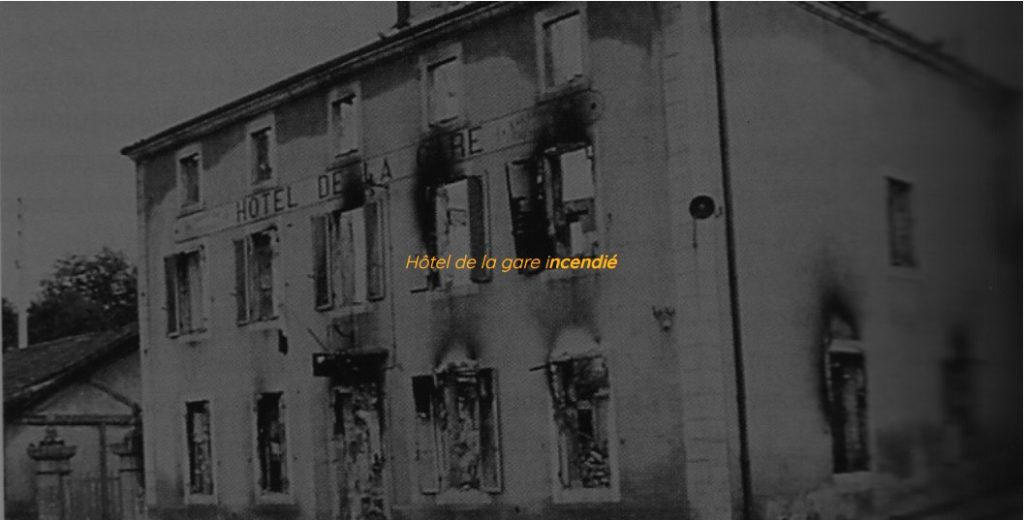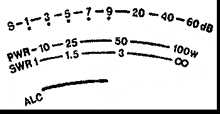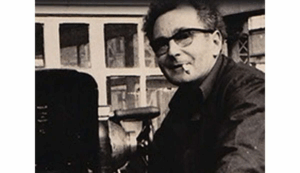

TM44LG : Un hommage radioamateur pour les 80 ans de la libération de Génelard !
Le 6 septembre 1944, la ville de Génelard retrouvait sa liberté après des années d’occupation. Cette date reste gravée dans la mémoire collective, et pour célébrer le 80ème anniversaire de cet événement historique, une initiative originale a vu le jour : une activation radioamateur sous l’indicatif spécial TM44LG.

Une manière unique de rendre hommage
Derrière cet indicatif se cache une volonté : celle de se souvenir, de transmettre et de connecter les passionnés de radio du monde entier à cette page d’histoire locale. Grâce aux ondes, les radioamateurs de toutes latitudes pourront marquer leur participation à cet hommage vibrant à travers des QSO avec la station TM44LG.
La radio, souvent perçue comme un simple moyen de communication, devient ici un vecteur de mémoire et de partage. Chaque contact réalisé avec TM44LG sera l’occasion de rappeler cette date clé et de maintenir vivant le souvenir de ceux qui ont lutté pour la liberté.

Quand et où ?
La station spéciale TM44LG sera activée par les membres du radio-club F6KJS durant 15 jours, du 15 au 29 septembre 2024, sur toutes les bandes en mode CW (télégraphie) et phonie (SSB) exclusivement. Cet événement coïncide également avec les Journées du Patrimoine, les 21 et 22 septembre 2024, où des animations seront proposées au Centre d’Interprétation de la Ligne de Démarcation à Génelard.
Site du Radioclub de Montceau les Mines : https://www.f6kjs.fr/
Centre d’interprétation de la ligne de démarcation, ville de Génelard: https://www.genelard.fr/le-centre-dinterpretation-de-la-ligne-de-demarcation
Programme des Journées du Patrimoine (21-22 septembre 2024) :
- Exposition de matériel radio d’époque : Découvrez des équipements historiques utilisés par les opérateurs radio pendant la Seconde Guerre mondiale.
- Atelier d’initiation à la CW (code morse) pour les enfants : Une initiation ludique au morse avec la possibilité pour les jeunes participants de repartir avec un diplôme.
- Trafic HF sur 40 et 20 mètres : Les passionnés de radio pourront suivre le trafic sur les bandes HF.
- Trafic QO-100 : Activation via le satellite géostationnaire QO-100 pour des contacts internationaux.

Une équipe passionnée aux commandes
Derrière TM44LG se cache une équipe de passionnés, menée par F6KJS, qui a mis tout en œuvre pour que cette activation soit un véritable succès. Que vous soyez radioamateur confirmé ou simplement curieux d’en savoir plus, n’hésitez pas à écouter les fréquences et à participer à cet événement unique.
Participer : une expérience inoubliable
Participer à l’activation de TM44LG n’est pas seulement une opportunité d’ajouter un nouvel indicatif à votre carnet de QSO. C’est aussi une chance de faire partie d’un projet qui allie histoire, mémoire et technologie. Chaque QSO réalisé sera la preuve que, 80 ans après les faits, la mémoire de la libération de Génelard continue de résonner à travers le monde, via les ondes.
Alors, à vos transceivers ! Soyez prêts à capter l’histoire et à faire partie de cette aventure radiophonique mémorable.
F6KJS et son équipe vous attendent sur les ondes avec TM44LG pour honorer ensemble cette page d’histoire !
La libération de Génelard
Génelard est une petite bourgade de l’ouest du département de Saône et Loire, située le long du Canal du Centre entre Paray-Le-Monial et Montceau-les–Mines.
Depuis l’instauration du STO (Service du Travail Obligatoire) en 1943, des milliers de jeunes réfractaires se regroupent pour former des maquis. A Sylla, près de Génelard, cachés dans les bois, les résistants harcèlent les forces allemandes. Ils forment le maquis de Sylla, qui se joindra en 1944 à d’autres combattants pour devenir des FFI (Forces Française de l’Intérieur).
Les combats à Génelard commencent le mardi 22 août 1944. A sept heures du matin le poste allemand à l’école primaire est attaqué par un groupe de résistants FFI. La bataille dure jusqu’au soir, les Allemands sont bien retranchés. Vers 22h30, les Allemands se rendent. Plusieurs victimes françaises sont à déplorer.
Mercredi 23 août : tout est calme jusqu’au moment où, vers 17h, , une colonne motorisée sème la panique dans le village, met le feu à certaines demeures d’où sont partis les tirs des résistants, et prend des otages qui heureusement seront rapidement libérés. Ils partent et reviennent le lendemain, provoquant la panique de la population en pillant les maisons et mettent le feu à la mairie. Ils reviennent ensuite jusqu’au dimanche 27 août, poursuivant leurs pillages.

Hôtel de la gare incendié
Du 28 août au 2 septembre, les trains de soldats allemands ne cessent de passer et des colonnes du 19ème corps d’armée allemande qui s’enfuit vers Belfort.
Dimanche 3 septembre : 7 h du matin, nouveau défilé de la colonne allemande. Celle-ci comprend des soldats à bicyclette, à cheval, des voitures. Ils sont précédés par des otages, pour éviter les attaques des résistants.
Mardi 5 septembre : des trains de soldats allemands sont repérés et mitraillés par des avions alliés. Le train blindé qui a fait tant de victimes à Paray-Le-Monial traverse Génelard. Il ne sera détruit que le 7 septembre.
Mercredi 6 septembre : des blindés alliés du 9ème RCA de la 1ere DB sous les ordres du Général De Lattre de Tassigny entrent à Génelard. C’est la libération.
Sources : Le livre GÉNELARD édité par l’association PAGE (Patrimoine Génelardais) et un témoignage écrit anonyme (Quelques épisodes que Génelard a vécu avant sa libération).
TM44LG: A Radio Amateur Tribute to the 80th Anniversary of the Liberation of Génelard!
On September 6, 1944, the town of Génelard regained its freedom after years of occupation. This date remains engraved in the collective memory, and to celebrate the 80th anniversary of this historic event, an original initiative has emerged: a radio amateur activation under the special callsign TM44LG.
A Unique Way to Pay Tribute
Behind this callsign lies a purpose: to remember, to transmit, and to connect radio enthusiasts from around the world to this local historical event. Through radio waves, amateurs from all latitudes will have the opportunity to participate in this vibrant tribute by making QSOs with the TM44LG station.
Radio, often seen as a simple means of communication, here becomes a vehicle for memory and sharing. Each contact made with TM44LG will be an opportunity to commemorate this key date and keep alive the memory of those who fought for freedom.
When and Where?
The special station TM44LG will be activated by members of the F6KJS radio club for 15 days, from September 15 to 29, 2024, on all bands in CW (telegraphy) and phone (SSB) modes exclusively. This event also coincides with the European Heritage Days on September 21 and 22, 2024, during which activities will be held at the Demarcation Line Interpretation Center in Génelard.
Radio Club of Montceau-les-Mines website: https://www.f6kjs.fr/
European Heritage Days Program (September 21-22, 2024):
- Exhibition of vintage radio equipment: Discover historical equipment used by radio operators during World War II.
- CW (Morse code) workshop for children: A fun introduction to Morse code, with young participants receiving a diploma at the end.
- HF Traffic on 40 and 20 meters: Radio enthusiasts will be able to follow the traffic on HF bands.
- QO-100 Satellite Traffic: Activation via the geostationary satellite QO-100 for international contacts.
A Team of Enthusiasts at the Helm
Behind TM44LG is a team of enthusiasts, led by F6KJS, who have worked hard to ensure this activation is a true success. Whether you’re a seasoned radio amateur or simply curious to learn more, don’t hesitate to listen in on the frequencies and take part in this unique event.
Participation: An Unforgettable Experience
Participating in the activation of TM44LG is not just an opportunity to add a new callsign to your QSO log. It is also a chance to be part of a project that combines history, memory, and technology. Each QSO made will serve as proof that, 80 years after the events, the memory of the liberation of Génelard continues to resonate across the world via the radio waves.
So, get your transceivers ready! Be prepared to capture history and be part of this memorable radio adventure.
F6KJS and its team await you on the airwaves with TM44LG to honor this chapter of history together!
The Liberation of Génelard
Génelard is a small town in the west of the Saône-et-Loire department, located along the Canal du Centre between Paray-Le-Monial and Montceau-les-Mines.
Since the introduction of the STO (Compulsory Labor Service) in 1943, thousands of young men who refused to comply banded together to form resistance groups. Near Génelard, hidden in the woods, the maquis fighters harassed German forces. They formed the Sylla resistance group, which joined other fighters in 1944 to become the FFI (French Forces of the Interior).
The fighting in Génelard began on Tuesday, August 22, 1944. At 7 a.m., the German outpost at the primary school was attacked by a group of FFI fighters. The battle lasted until the evening, with the Germans well entrenched. Around 10:30 p.m., the Germans surrendered, though several French casualties were reported.
On Wednesday, August 23, all was calm until around 5 p.m., when a motorized German column caused panic in the village, setting fire to homes from which the resistance fighters had fired, and taking hostages who were fortunately quickly released. The Germans left but returned the next day, continuing to loot houses and setting fire to the town hall. They continued their raids through Sunday, August 27.
The Train Station Hotel Set Ablaze
From August 28 to September 2, trains carrying German soldiers passed through, along with columns of the 19th German Army Corps fleeing toward Belfort.
On Sunday, September 3, at 7 a.m., a new German column passed through, including soldiers on bicycles, horseback, and in vehicles. They were preceded by hostages to prevent resistance attacks.
On Tuesday, September 5, German troop trains were spotted and strafed by Allied aircraft. The armored train that had caused many casualties in Paray-Le-Monial passed through Génelard. It was finally destroyed on September 7.
On Wednesday, September 6, Allied tanks from the 9th RCA of the 1st Armored Division under General De Lattre de Tassigny entered Génelard. The town was liberated.
Sources: The book GÉNELARD published by the PAGE association (Patrimoine Génelardais) and an anonymous written testimony (Some Episodes That Génelard Lived Through Before Its Liberation).
En savoir plus sur LVP71
Subscribe to get the latest posts sent to your email.







